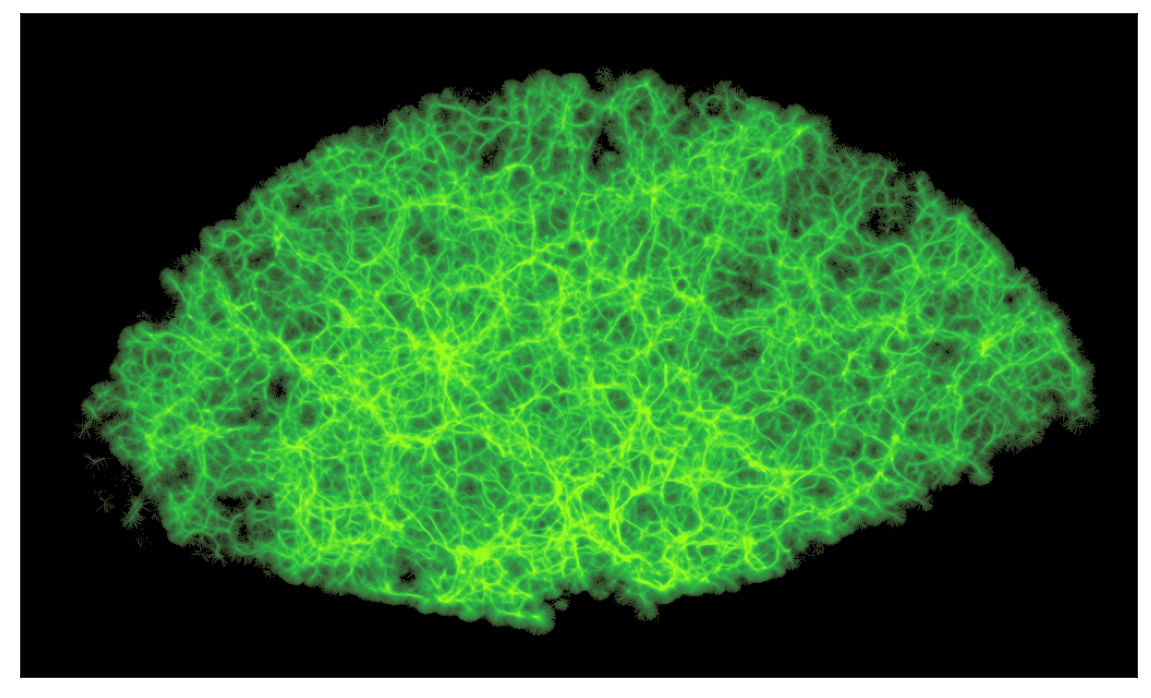A tenet of modern cosmology is the existence of the “cosmic web”, a vast filamentary structure formed via the collapse of matter due to gravity. This structure is ubiquitous in cosmological simulations yet challenging to observe due to its diffuse nature.
Recently, a new technique was developed which is inspired by the growth and movement of Physarum polycephalum slime mold to map the cosmic web of a low redshift (z < 0.01) sub-sample of the SDSS spectroscopic galaxy catalog (Burchet et al. 2020, Elek et al. 2020). However, this limited volume limits the statistics and observational techniques that can be applied to this slime mold generated density field.
Matthew Wilde, UW graduate student, applied this algorithm to the classic SDSS and eBOSS surveys which expands the volume mapped to z < 0.5. The slime mold density map shown in the accompanying image was recently released as a value added catalog (VAC) and released by the SDSS DR17 team (Abdurro’uf et al. 2021, Wilde et al. in prep.), and will allow astronomers a new way to explore the cosmic web. Applications of this density map include constraining the role of environment on galaxy evolution and the role of galactic feedback, more efficient follow up observing strategies for gravitational wave targets, and interesting tests of cosmological constants and dark matter candidates.
